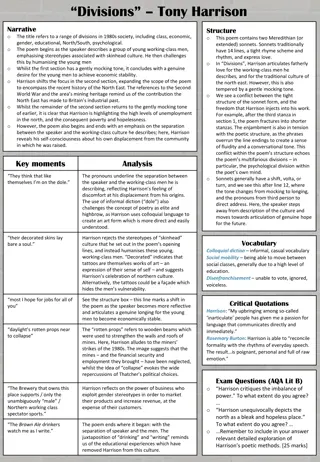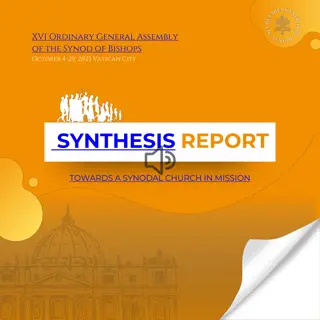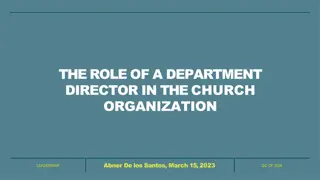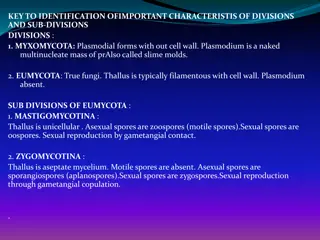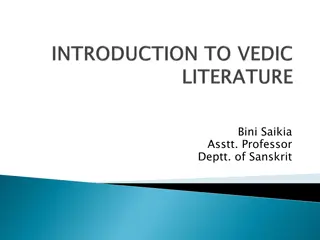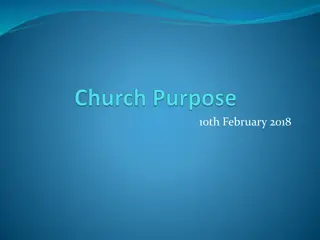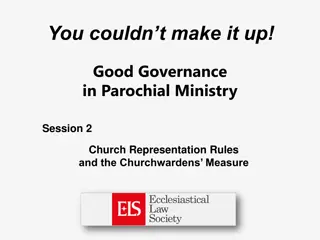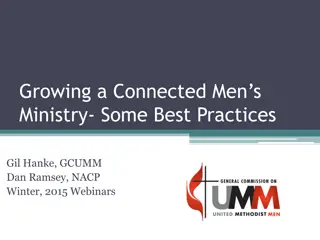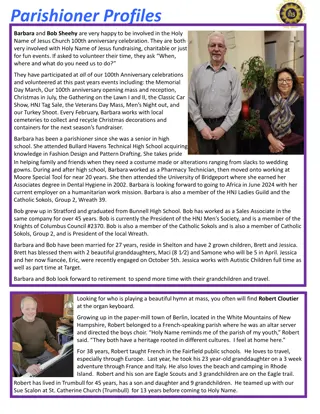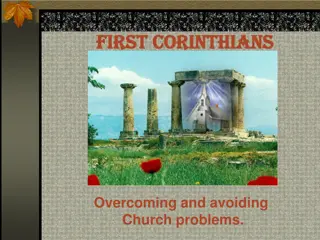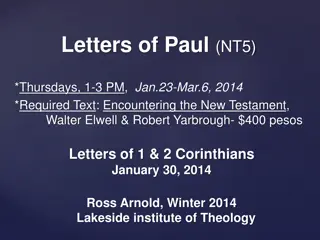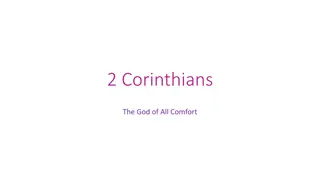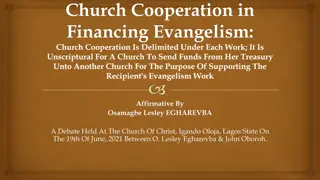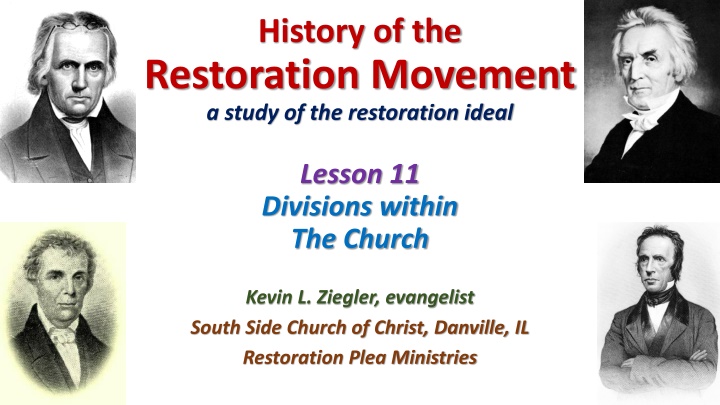
Divisions Within the Church: The Controversy Over Music in the Restoration Movement
Explore the historical divisions within the Restoration Movement, focusing on the controversy surrounding instrumental music in worship. Learn about the differing views of prominent figures like Alexander Campbell and the impact of this issue on congregations.
Download Presentation

Please find below an Image/Link to download the presentation.
The content on the website is provided AS IS for your information and personal use only. It may not be sold, licensed, or shared on other websites without obtaining consent from the author. If you encounter any issues during the download, it is possible that the publisher has removed the file from their server.
You are allowed to download the files provided on this website for personal or commercial use, subject to the condition that they are used lawfully. All files are the property of their respective owners.
The content on the website is provided AS IS for your information and personal use only. It may not be sold, licensed, or shared on other websites without obtaining consent from the author.
E N D
Presentation Transcript
History of the Restoration Movement a study of the restoration ideal Lesson 11 Divisions within The Church Kevin L. Ziegler, evangelist South Side Church of Christ, Danville, IL Restoration Plea Ministries
Outline of Class Lesson 1 What is meant by Restoration Movement and Why it Needs to be Taught Lesson 2 Restoration as a Biblical Principle Lesson 3 Restoration Movement before America Lesson 4 What made America Ready for the Restoration Movement? Lesson 5 Early Attempts at Restoration in America Lesson 6 Barton W. Stone Consistent with the Word of God Lesson 7 Thomas Campbell Speaking Where Scriptures Speak Lesson 8 Alexander Campbell the Ancient Order of Things Lesson 9 Walter Scott the Gospel Restored Lesson 10 Racoon John Smith the Frontier Evangelist Lesson 11 Divisions within the Church Lesson 12 The Restoration Ideal in Today s Church
Divisions within the Church The Music Question As a part of the general denial of all physical actions and objects connected with worship, churches of the Reformed tradition were suspicious of instrumental music, choirs, part-singing, and hymns that were other than paraphrased psalms. Because of the high cost of manufactured goods on the frontier and the relative poverty of frontier society, few congregations before the Civil War could afford pianos or organs, especially in the South, so the issue was nonexistent. The New England churches (of the Reformed tradition) debated the issue in the 18th century and ruled against the use of instruments in worship. The instrument in question was the bass violin. Pianos and organs were often associated with saloons and theaters.
Divisions within the Church The Music Question Alexander Campbell was generally opposed to instruments in worship, but he died before the issue became a problem to the movement. L.L. Pinkerton of Lexington, KY, is credited with introducing the instrument into the worship services of the Restoration Movement in 1860.
Divisions within the Church The Music Question Those not opposed (not necessarily enthusiastically in favor) Benjamin Franklin in the Proclamation and Reformer (1850) defended the use of written music in worship. He argued that printed notes for singing are as legitimate as written notes for preaching. (Hymnbooks with notes were not opposed in the movement until after instrumental music became a divisive issue.) J. K. Pendleton: We confess to a fondness for good music of all kinds; and find it no offense to our own feelings of piety or praise to hear the grand and majestic swell of the organ rolling forth, laden with the strains of our sacred music." Pendleton, however, urged the principle of meat offered to idols (I Corinthians 10) and advised the churches not to let it become a point of division.
Divisions within the Church The Music Question Those not opposed (not necessarily enthusiastically in favor) Isaac Errett (in the Standard), A. S. Hayden, and other leaders of the movement did not urge the use of the instrument but objected to the hermeneutics and logic used by McGarvey and others that made it a matter of faith rather than expediency.
Divisions within the Church The Music Question Those who opposed the instrument in worship (examples) J. W. McGarvey argued that nothing may be introduced into public worship that is not explicitly authorized in the New Testament. (This was the traditional Reformed interpretation of biblical silence vs. the Lutheran view.) Moses Lard was editor of the Quarterly and one of the keenest and most influential leaders of the anti-instrument position.
Divisions within the Church The Music Question Moses Lard wrote: Let every preacher resolve never to enter a meeting- house of our brethren in which an organ stands. Let no one who takes a letter from one church ever unite with another using an organ. Rather let him live out of a church than go into such a den. Let all who oppose the organ withdraw from the church if one is brought in. (Lard s Quarterly, 1864) Let us agree to commune with the sprinkled sects around us, and soon we shall come to recognize them as Christians. Let us agree to recognize them as Christians, and immersion, with its deep significance, is buried in the grave of our folly. . . . Let us agree to admit organs, and soon the pious, the meek, the peace-loving, will abandon us, and our churches will become gay worldly things, literal Noah s arks, full of clean and unclean beasts. (Lard s Quarterly, 1865)
Divisions within the Church The Music Question Every man among us must stand nobly up for the following position: In all acts of worship we must do only what is pre- scribed in the New Testament or was done with divine sanction by the primitive Christians. Not a semblance of innovation must be allowed on this sacred principle. (Lard s Quarterly, 1867)
Divisions within the Church The Music Question The movement as a whole did not divide at this time, but many local congregations did. Preachers, congregations, and periodicals began to take sides. Some of the results were ludicrous. An Indiana congregation built a church building with the windows and doors made purposely small so that an organ could not be moved in without being dismantled. Daniel Sommer, who was against the instrument, raised the issue in his Indiana congregation. The congregation had no instrument and had never been interested in one. Sommer created such interest that some of his members withdrew and established a congregation so they could have an organ.
Divisions within the Church The Music Question Many advised forbearance. Benjamin Franklin advised those who opposed the use of the instrument to meet separately if an organ were put in over their objections, but not to start a new congregation. Many advised not using the organ if a sizable minority were opposed.
Divisions within the Church The Communion Question The early movement was closed communion Allowing to the Lord s table only those who were members of a recognized "restoration" congregation if not their own. (This had been the general practice of the Baptists). By 1862, according to Isaac Errett, two-thirds of the churches associated with the reform allowed (they did not formally invite) anyone who considered himself a Christian.
Divisions within the Church The Communion Question Those who defended "open communion" (Examples) W. K. Pendleton argued for open communion on two bases: Positive argument: Logically, the unimmersed might be considered a "defective" Christian, but a Christian, nevertheless. Negative argument: Nowhere does Scripture forbid the unimmersed to share in the Lord's Supper. Isaac Errett
Divisions within the Church The Communion Question Those who called for a return to "closed communion" George W. Elley, in a series of articles in the Millennial Harbinger, called for a return to the older policy. The effect of the controversy on the question of "open membership" Although none of the early debaters of the issue of communion intended to sanction open membership, the problem carried over into the larger consideration of church membership.
Divisions within the Church The Missionary Society Question Disagreement over extra-congregational organizations Discussions began when Alexander Campbell was living over state and national conventions at first he opposed, but later (1843) he changed his mind and began encouraging cooperation Flared into bitter controversy after Cambell died and Benjamin Franklin reversed himself and joined the anti- society forces.
Divisions within the Church The Missionary Society Question The Louisville Plan (1869) At the national convention of 1868, a committee of 20 leaders, including both those for, and those against societies, was created to devise a plan that would eliminate as many objections to the American Christian Missionary Society as possible. The next year at Louisville they presented their plan.
The Louisville Plan The General Christian Missionary Convention (national) State Convention State Convention State Convention Messengers from churches and district conventions
Divisions within the Church The Missionary Society Question This was an organization of churches, not individuals. There were to be district, state, and national boards and a corresponding secretary as the executive officer of each board. In the General or national convention, each state was entitled to two delegates plus one additional delegate for each 5,000 members in the state. Churches were urged to pledge an annual sum for missions and pay to the district treasurer. Half of this money went for district work, half for national.
Divisions within the Church The Missionary Society Question Results of the Louisville Plan Confusion. The reformers had little experience with the kind of brotherhood machinery the denominations were accustomed to using.
Divisions within the Church The Missionary Society Question Results of the Louisville Plan Leaders as McGarvey were forced to compromise their stand against "things not authorized." McGarvey said: Let it be observed that we here confine ourselves to acts of worship. All that has been said by advocates of musical instruments about the silence of Scriptures in reference to Colleges, Missionary Societies, etc., is wide of the mark. We might be excusable for adopting means not mentioned in the Scriptures, for spreading a knowledge of the Gospel, and still inexcusable for introducing in our worship of God, an element which he has not authorized.
Divisions within the Church The Higher Educational Question The Restoration Movement had a tradition of objection to theological degrees and titles that smacked of the denominational clergy system. Early educators objected to the granting of degrees, especially doctor s degrees (most which were honorary at this time). The first catalog of David Lipscomb University (1894) opposed the conferring of degrees (by 1901, they were offered. The Christian Standard of 1899 editorialized against the signs of pride and a haughty spirit .
Divisions within the Church The Baptism Question The issue: can the pious unimmersed by admitted to membership Background: There was no sustained discussion of the problem of admitting unimmersed believers to church membership in Campbell's time. Campbell's identification of them as "defective Christians" was used by some to justify the practice of accepting the unimmersed L.L. Pinkerton in 1869 was one of the first prominent ministers to publicly argue for admission of the unimmersed (he also argued against biblical inerrancy).
Divisions within the Church The Baptism Question J.S. Lamar (Christian Quarterly 1873) argued that Christian conduct was the basis of fellowship and union, and that such fellowship and union preceded agreement on the mode of baptism. Thomas Munnell (New Christian Quarterly, 1894) argued that immersion ought to be waived as a requirement in the interest of union. E. W. Herndon, Isaac Errett, J. W. McGarvey, held immersion as a test of fellowship.
Divisions within the Church The Baptism Question Although the debate concerning accepting the unimmersed into congregational fellowship was often intense in this period, the actual practice of welcoming the unimmersed into the church did not begin until after 1900.
Divisions within the Church The Inerrancy and Authority of the Bible Question Dr. R.L. Cave of St. Louis, L.L. Pinkerton ,(the first "true liberal" among the reformers), Prof. Hugh C. Garvin of Butler University, and others began to argue either that the Bible is not the single inerrant guide to faith and practice or that it does not contain fixed patterns of behavior and belief. The question of biblical inerrancy and authority often crossed paths (not always) with the question of "open membership."
Divisions within the Church Where the Bible speaks, we speak; where the Bible is silent, we are silent Rightists: Any doctrine or practice not specifically authorized, either by explicit statement or apostolically approved precedent, is prohibited (by this silence). Centrists: Unless rendered inexpedient by circumstance, a religious practice is permitted by the absence of biblical teaching to the contrary. Leftists: Anything can be written into divine silence as long as the congregation approves it by a majority vote.
Where the Bible speaks, we speak! Where the Bible is silent, we are silent! Matters of Faith or Matters of Opinion Leftists Rightists Anything can be written into divine silence as long as the congregation approves it by a majority vote. Any doctrine or practice not specifically authorized, either by explicit statement or apostolically approved precedent, is prohibited (by this silence). This allowed them to view all matters of faith as matters of opinion. This allowed them to view matters of opinion as matters of faith.
Divisions within the Church 1889 The Sand Creek Declaration August 1889 yearly meeting of churches in Illinois at Sand Creek, Shelby County, became a forum for division. Daniel Sommer, editor of the Octographic Review, openly charged the innovators with departing from the faith and creating division.
Divisions within the Church 1889 The Sand Creek Declaration P. D. Warren, an elder from the Sand Creek congregation Position of Sand Creek and four other congregations. He charged that there were those present who do teach and practice things not taught or found in the New Testament.
Divisions within the Church 1889 The Sand Creek Declaration P. D. Warren, an elder from the Sand Creek congregation And now, in closing this address and declaration, we state that we are impelled from a sense of duty to say that all such as are guilty of teaching or allowing and practicing the many innovations and corruptions to which we have referred, after having had sufficient time for meditation and reflection, if they will not turn away from such abominations, that we cannot, and will not, regard them as brethren. The result: an open break between the churches in Shelby County.
Divisions within the Church 1889 The Sand Creek Declaration The Christian Standard denounced the Sand Creek Declaration as a new confession of faith. Many leaders, among them David Lipscomb, J. W. McGarvey, Moses E. Lard, W. H. Hopson, and L. B. Wilkes, advocated middle ground; they were opposed to societies and instruments, but they held for unity, at least at the national level. Many of these later left the middle ground and moved to the right.
Divisions within the Church 1889 The Sand Creek Declaration Among those who opposed the instrument and stayed on the middle ground were McGarvey and Fred L. Rowe, editor of the Christian Leader. McGarvey held membership in an anti-organ congregation in Lexington, KY, but remained on the staff of contributing editors of the Christian Standard. A debate continued as to exactly what constituted an innovation.
Divisions within the Church 1906 Federal Religious Census J.W. Shepherd, with the support of other leaders of the movement, and with the sanction of The Gospel Advocate, The Firm Foundation, and the Octographic Review, informed the Census Bureau that the conservative, anti-society churches should be listed separately from the Disciples of Christ and designated Churches of Christ. Many anti-society brethren opposed this move, but no united voice could be raised in opposition.
Divisions within the Church 1906 Federal Religious Census Moses E. Lard, Benjamin Franklin, and Tolbert E. Fanning, had systematically opposed instrumental music in the worship, open communion, a paid and located ministry, missionary societies, and anything else that they could not find in the Bible. This furnished the intellectual base for the Rightists. At first, the editors of the Christian Standard and the Christian Evangelist disregarded the separate listing in the census
Divisions within the Church Divisions over that which the Bible is Silent Order of worship Paid ministry Extra-congregational institutions, such as orphanages, Bible colleges, retirement centers Eschatology (study of end times) Sunday School The choosing of elders Missionary methods
Divisions within the Church Divisions over that which the Bible is Silent Choirs The place of women in the church The number of cups to be used in communion The use of piano notes in hymnals The right of the congregation to break the loaf in the Communion The use of published teaching materials Soloists in the worship service Methods used in raising money
Divisions within the Church 1959 Disciples of Christ Restructuring The International Convention of Disciples of Christ, meeting at Denver, passed a resolution calling for all local congregations to adopt new charters or constitutions that would recognize the authority of state and national bodies over the local congregation. The Disciples leadership desired to enter into binding representative negotiation with other groups, the United Church of Christ, in particular.
Divisions within the Church 1959 Disciples of Christ Restructuring The Disciples leaders desired to streamline the organizational structure of the United Christian Missionary Society with a view to increased efficiency and stronger and more direct control from headquarters. The Disciples tested the validity of local autonomy in a rash of lawsuits in the 1940 s and 1950 s.
Divisions within the Church 1959 Disciples of Christ Restructuring The Disciples tried to prove in the courts that nonsupport and noncooperation constituted a departure from the faith of the founding fathers of the Christian Church and therefore any right to further use of the church property had been forfeited.
Divisions within the Church 1959 Disciples of Christ Restructuring In each of these cases to reach the highest court in the states involved, without exception, it was established that those who desired to withdraw support from the International Convention, etc. did not represent a departure from the founding faith. After restructure, those congregations remaining connected, would have committed themselves to the new connectional denomination.
Divisions within the Church Disciples of Christ Restructuring As the 1968 deadline drew near, hundreds of churches, realizing that staying in the Disciples of Christ Yearbook automatically took a church into Restructure, formally withdrew their names from the listings. There was much organized resistance within the fold of Disciple Many local congregations enthusiastically supported Restructure. Many local congregations passively allowed themselves to be included in the new denomination.
Divisions within the Church Disciples of Christ since Restructuring The Disciples of Christ continues to show a steady decrease in church membership, the number of churches, and missionary outreach. Just before Restructure, the Disciples' 1967 Yearbook listed 7,965 churches. By 1974 the Yearbook listed only 4,554, of which only 3,696 were participating.
Divisions within the Church Disciples of Christ since Restructuring 2008 679,563 members in 3,714 congregations 2015 497,423 in 3,267 congregations 2018 380,248 members
Divisions within the Church Disciples of Christ since Restructuring Baptism while most Disciples churches practice baptism by immersion, many also accept other modes of baptism, as in sprinkling and pouring of infants. Unity congregations share with churches of other denominations in joint worship and in community Christian services. Ecumenical cooperation and collaboration with other Christian Communions has long been practiced.
Divisions within the Church Disciples of Christ since Restructuring Full communion partners The United Church of Christ (1989) The United Church of Canada (2019) LGBTQ inclusion 2013 the Disciples of Christ voted in favor of a resolution affirming all members regardless of sexual orientation. After same-sex marriage was legalized in the US, the denomination reiterated that it leaves all decisions of policy on same-sex marriage to local congregations.

